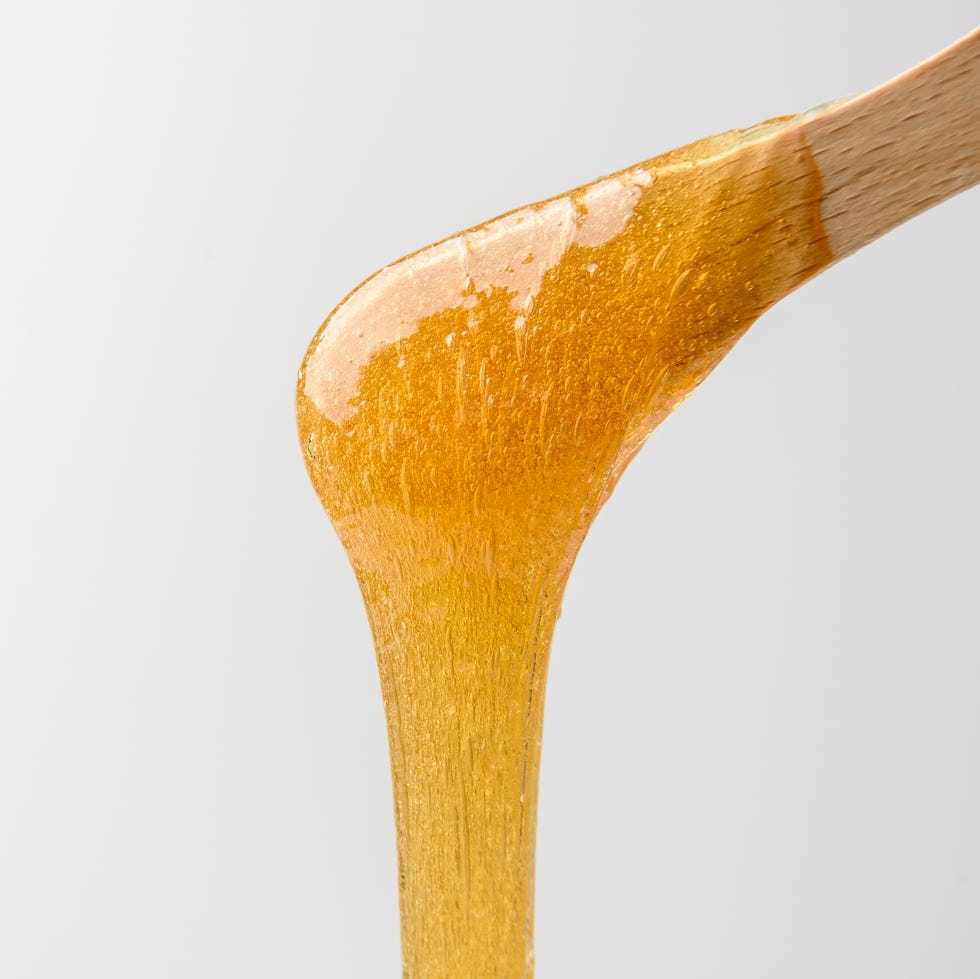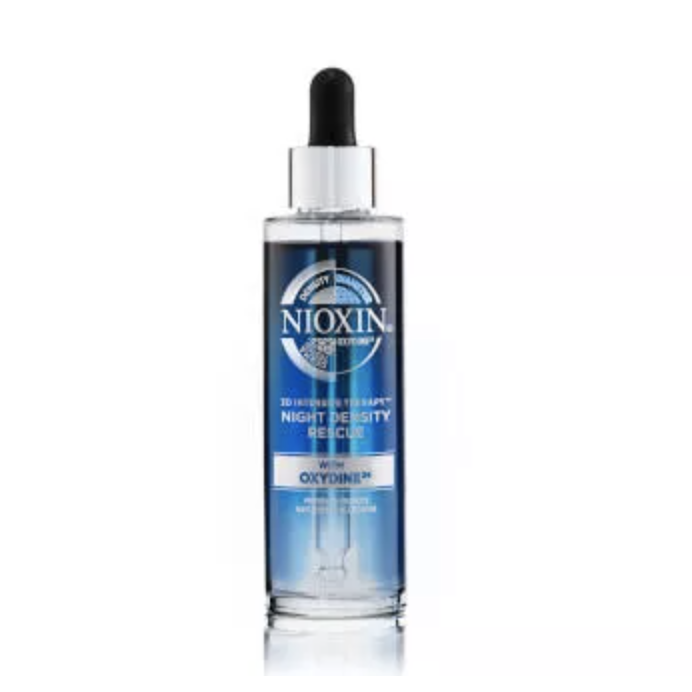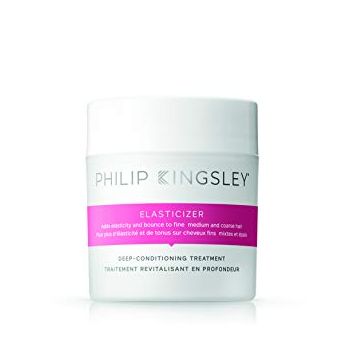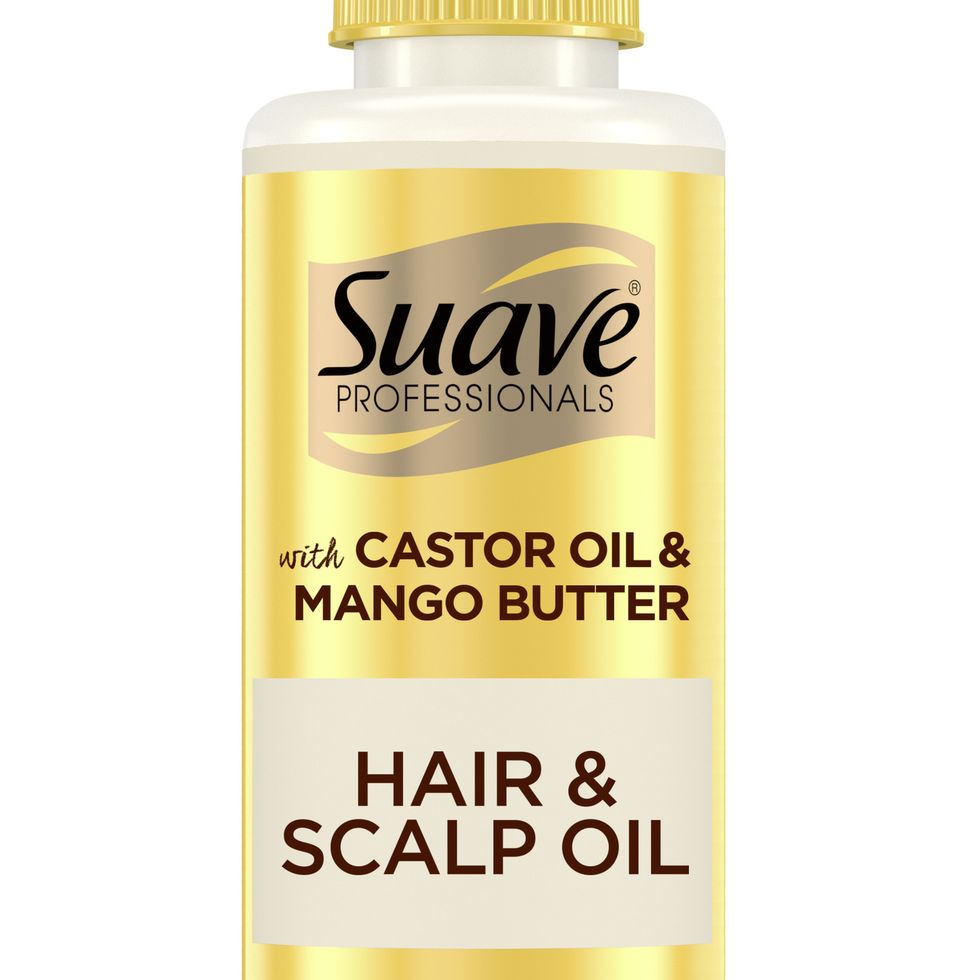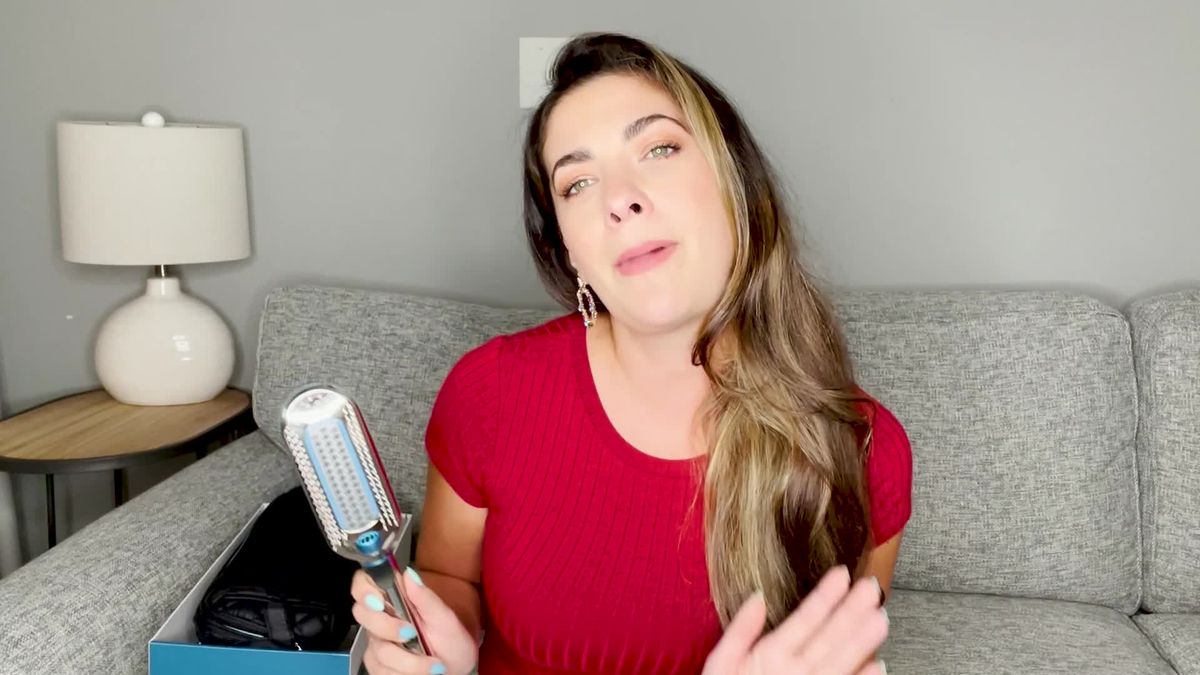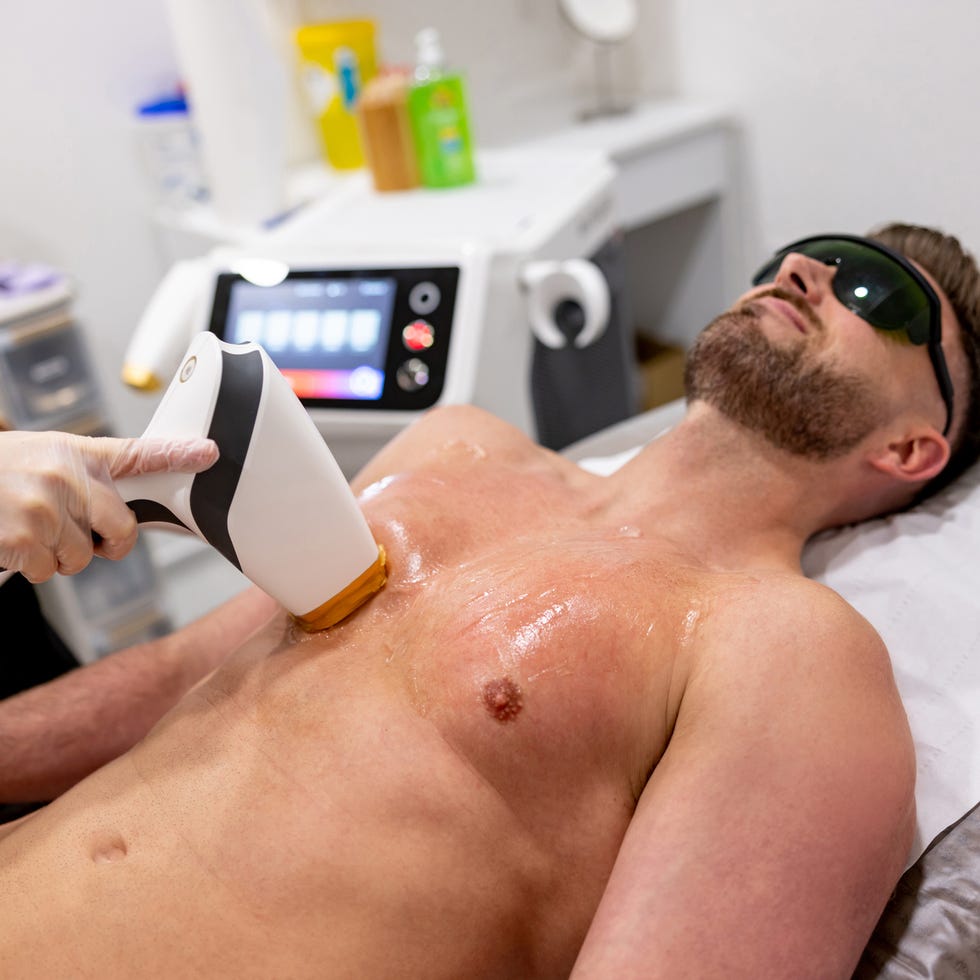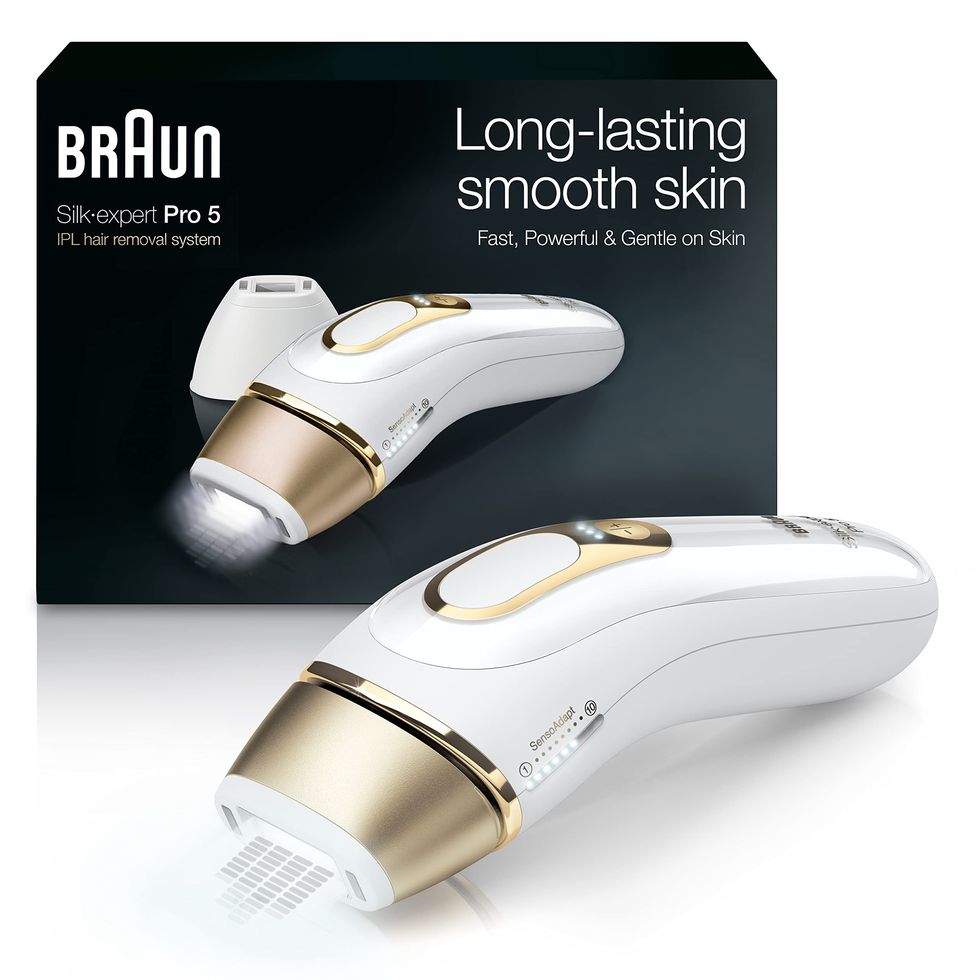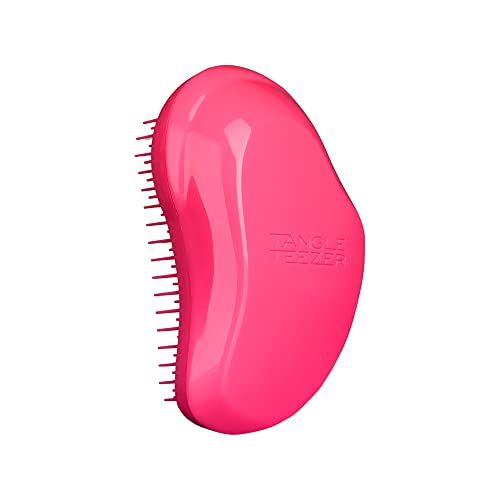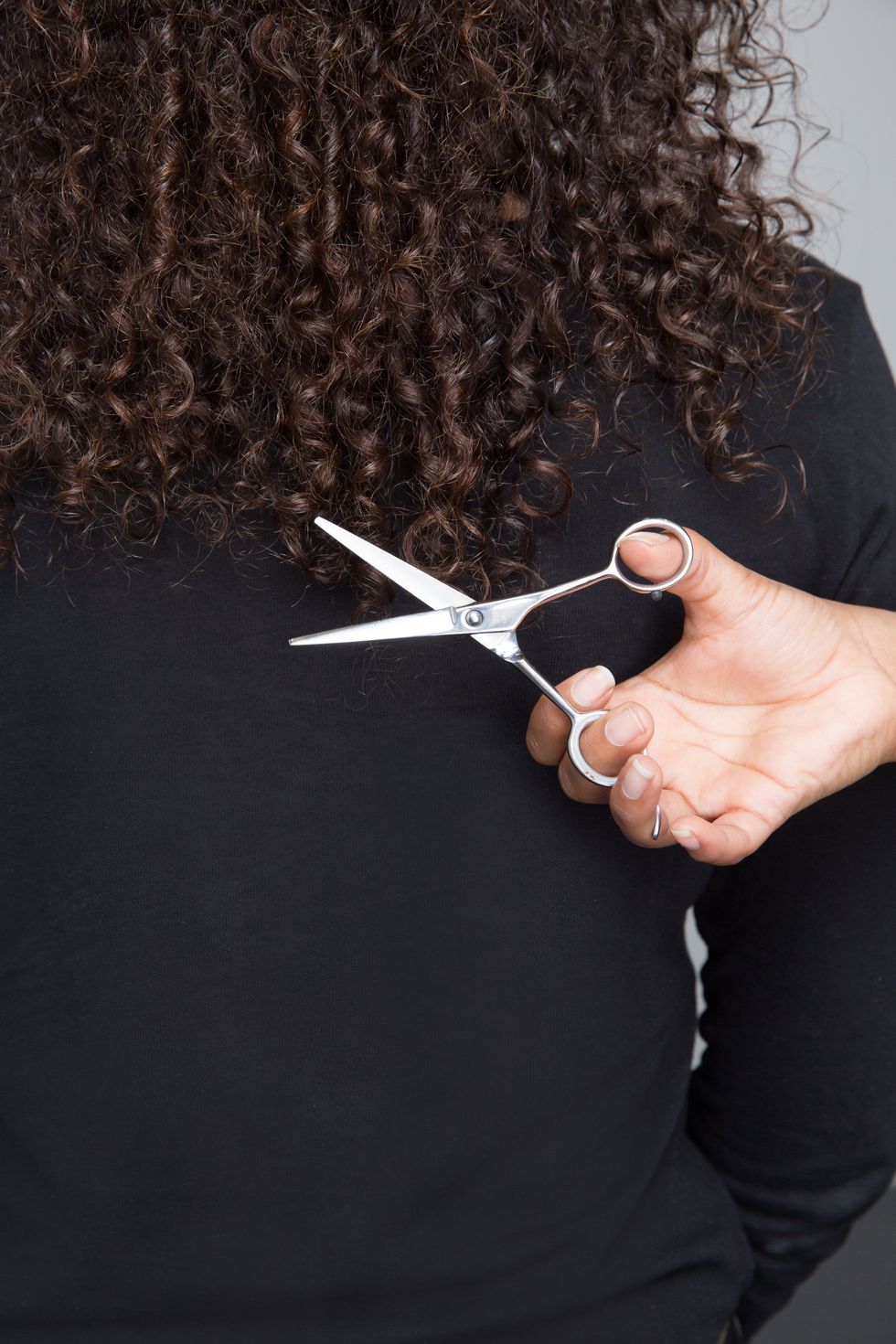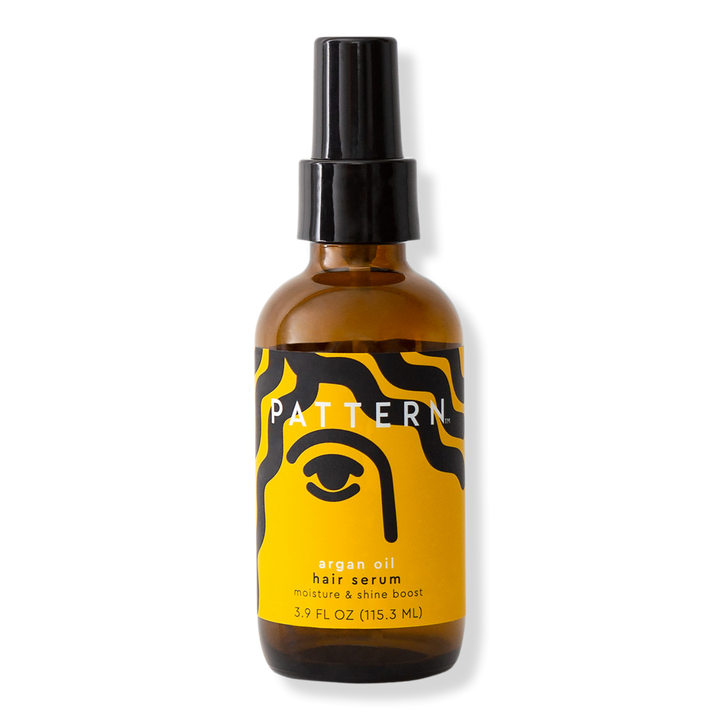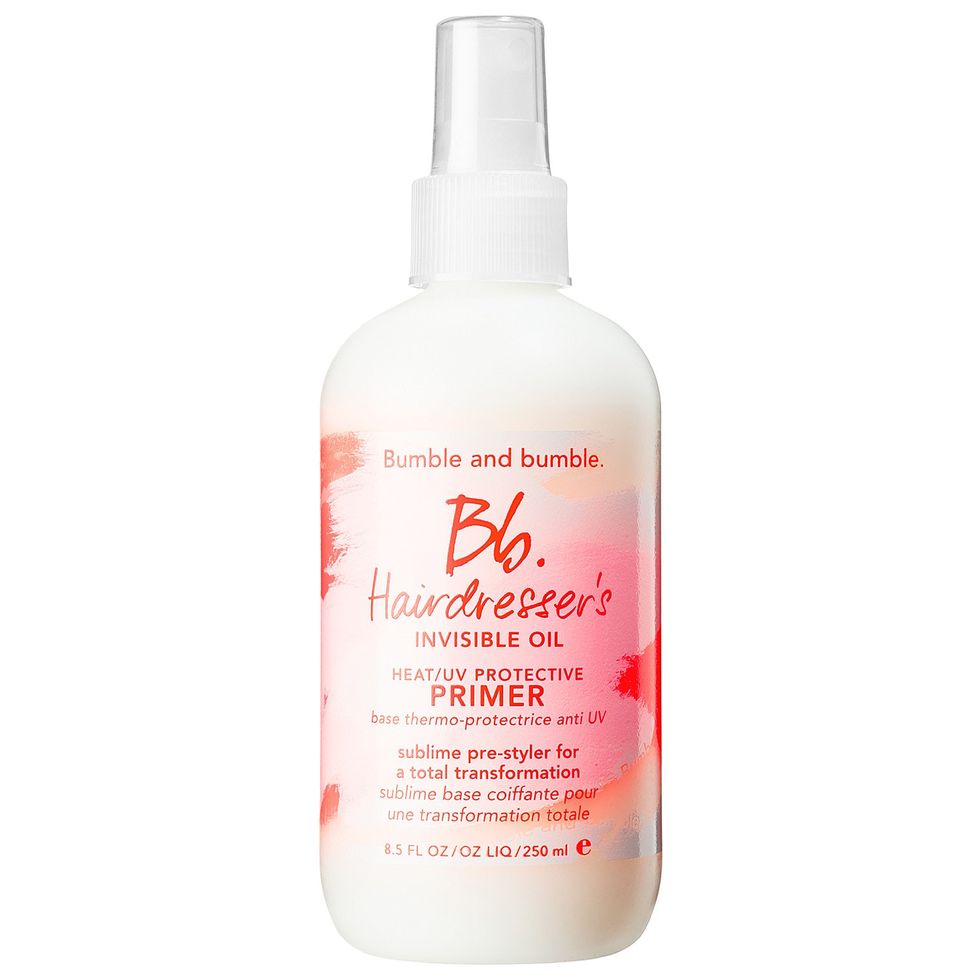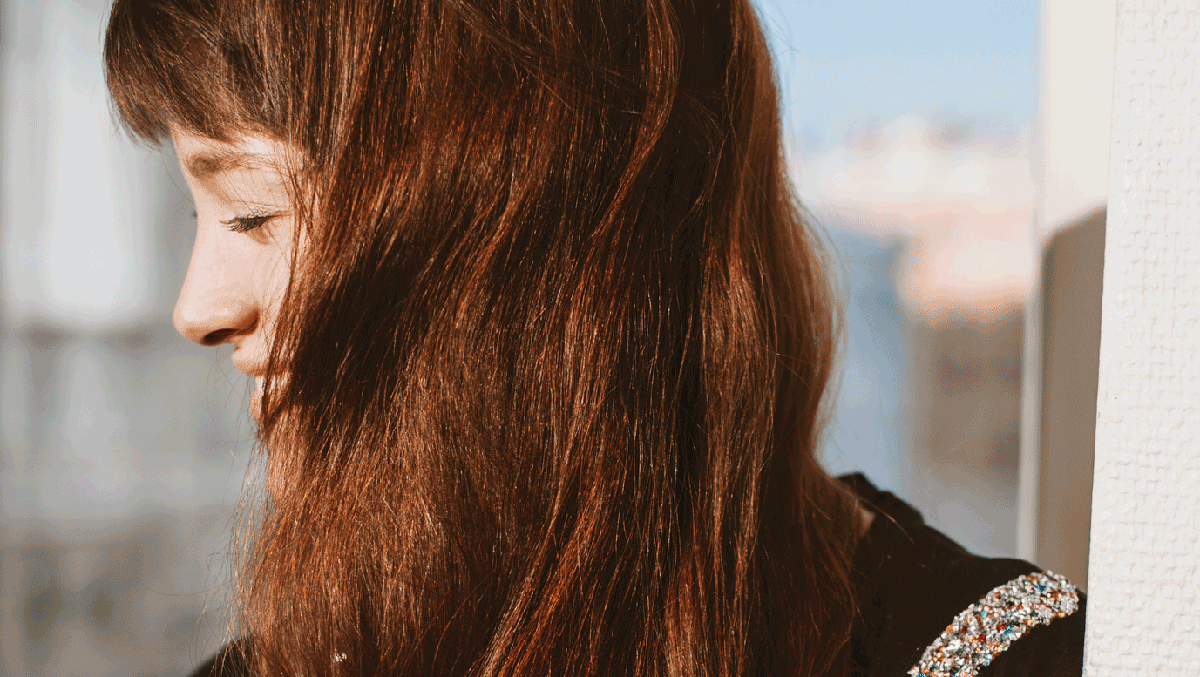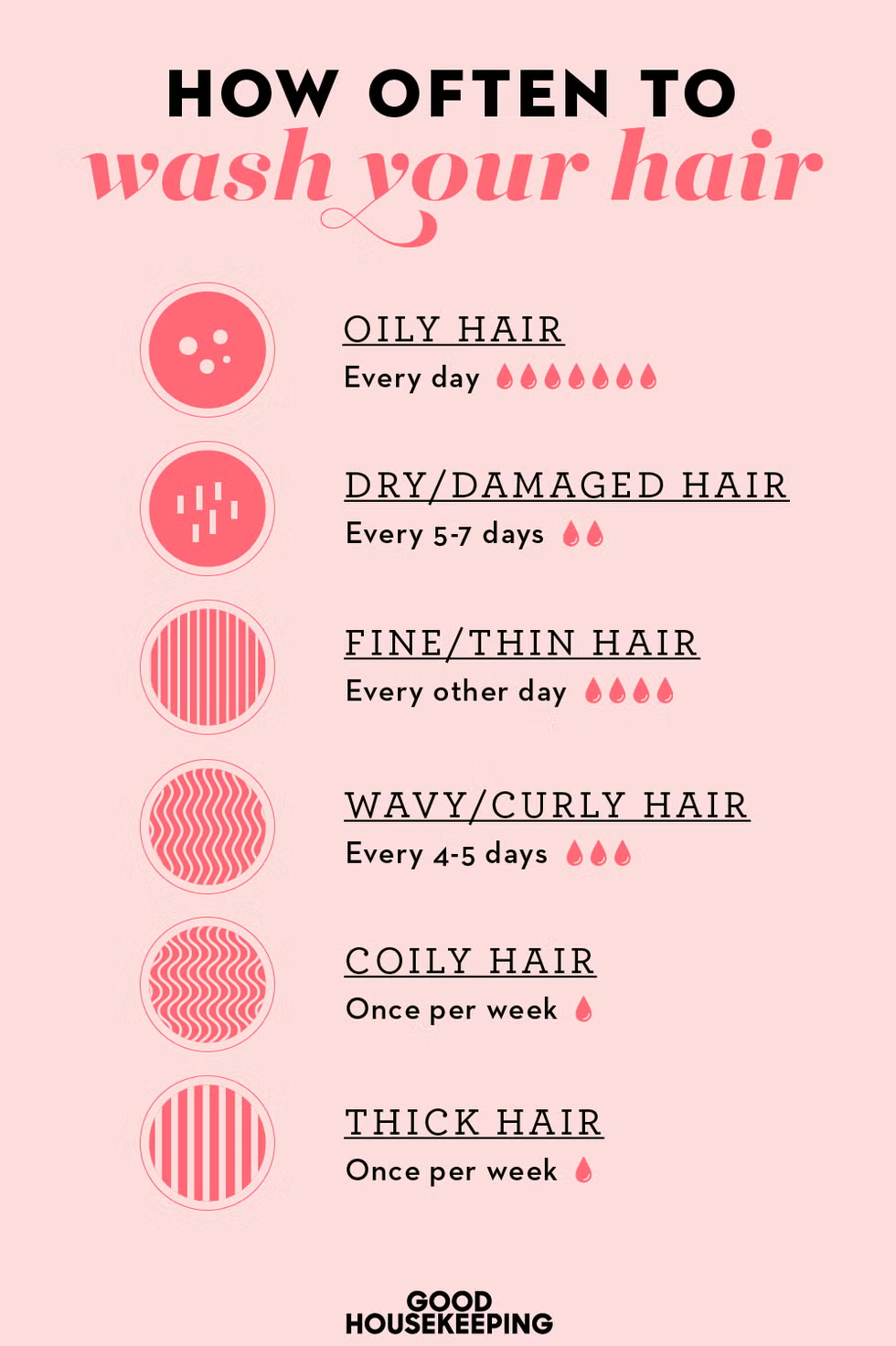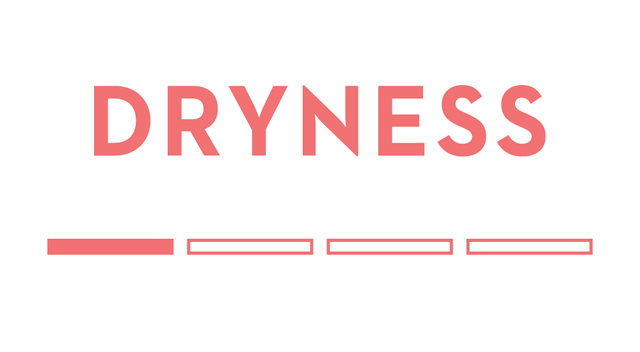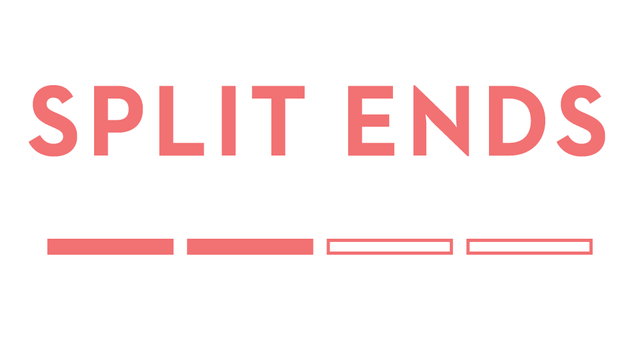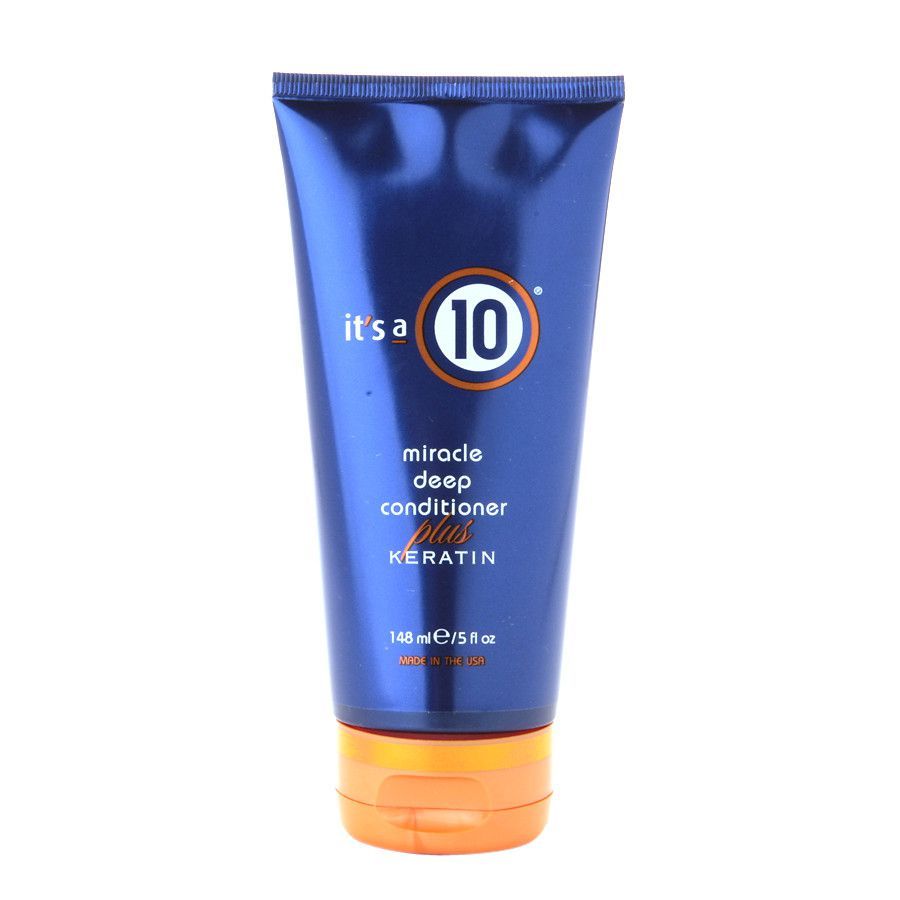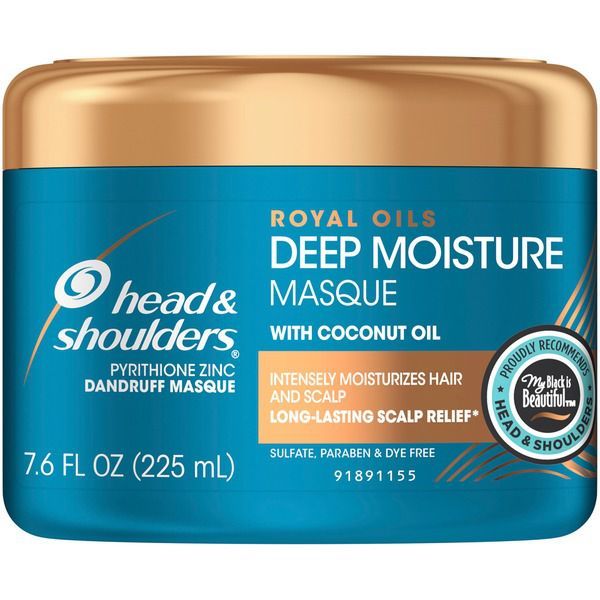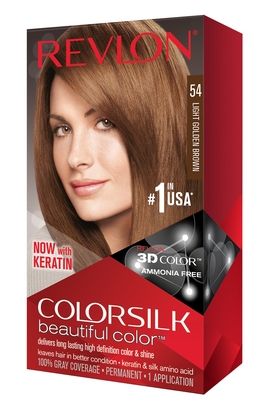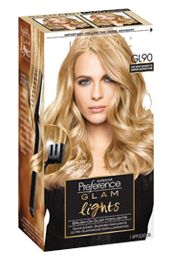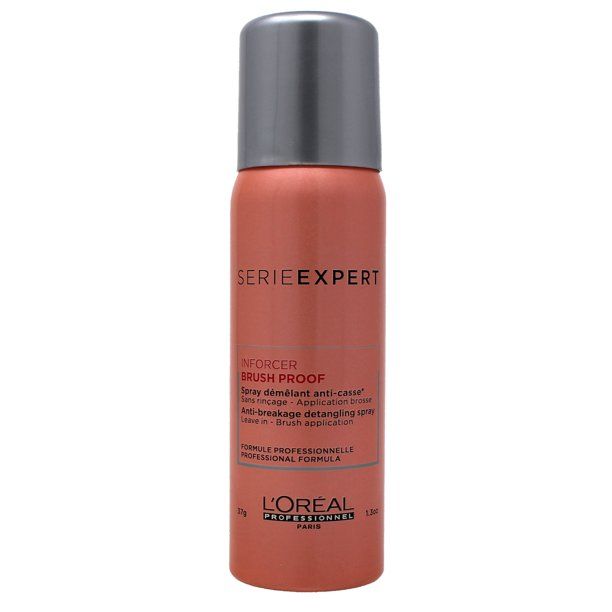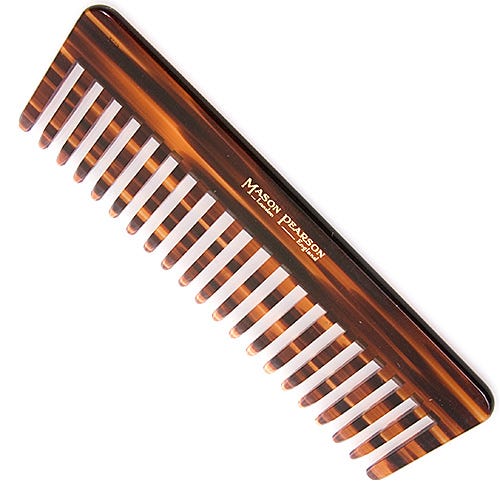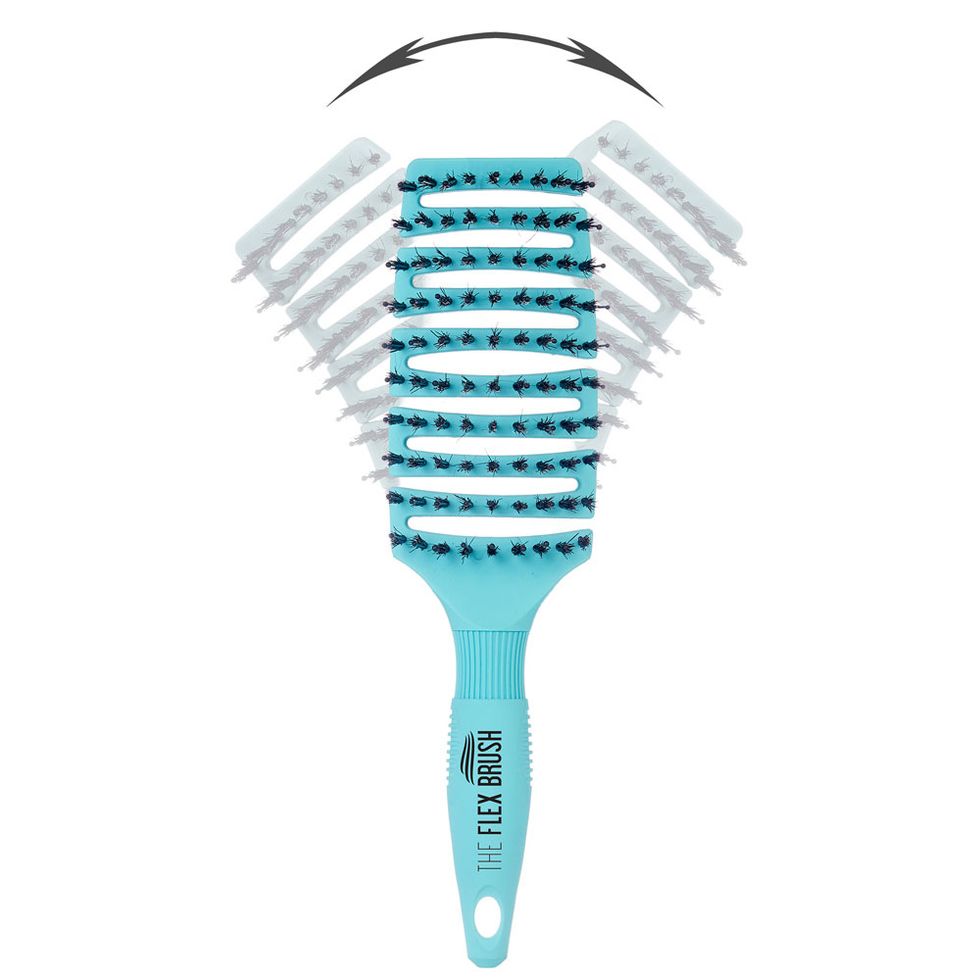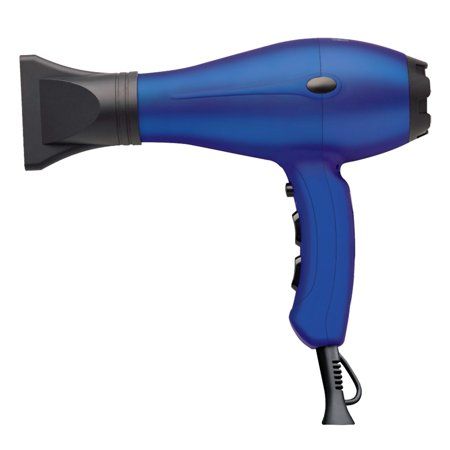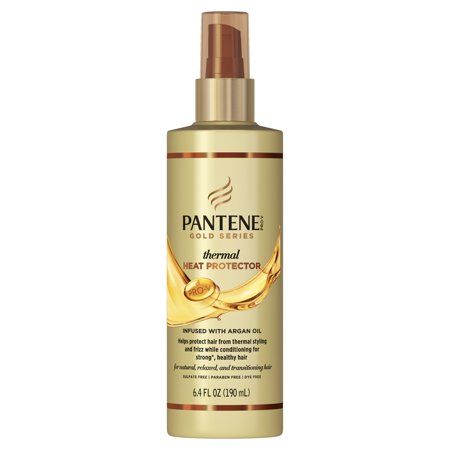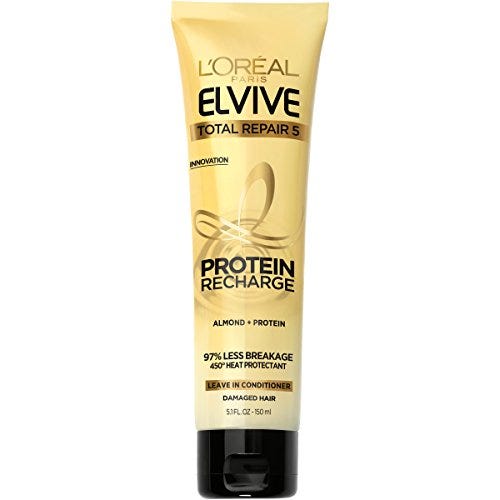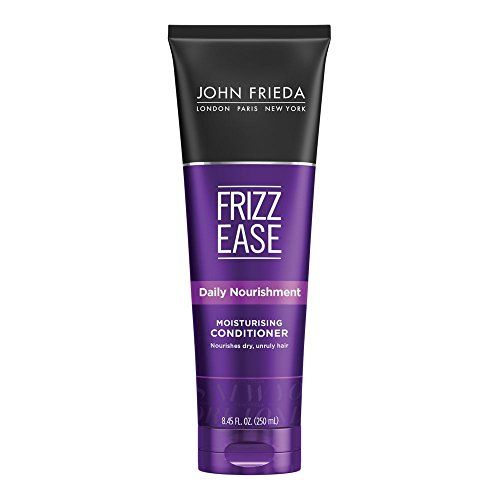Anyone with curly hair has heard it: “Your hair is so pretty, I wish I had curly hair!” It’s meant to be a compliment, but curly girls know that having a good hair day is so much harder than it looks. Curls can be unpredictable and difficult to control, and there are days when having wild curls feels less than enviable.
The difference between fighting with your curls and loving them really lies within your hair care routine. Whether or not you subscribe to the Curly Girl Method, finding the right products and hairstyles for your specific curl type makes managing curly hair so much easier, and treating your curls right makes your hair so much healthier, in turn.
Below, you’ll find simple tips and top-rated curly hair products that will keep your waves and curls looking shiny and strong. Then, advance to seven easy curly hairstyle ideas you can tackle at home.
Best hair tips for styling curly hair
Curly hair is different from other hair textures: It requires more hydration, less washing, and, if we’re being honest, more patience than straighter hair types. But curly hair doesn’t have to feel like a curse! These tips, products, and pointers will help you find the best curls of your life with minimal effort — some will even give you better hair while you get your beauty sleep.
1. Always comb your hair from the bottom up.
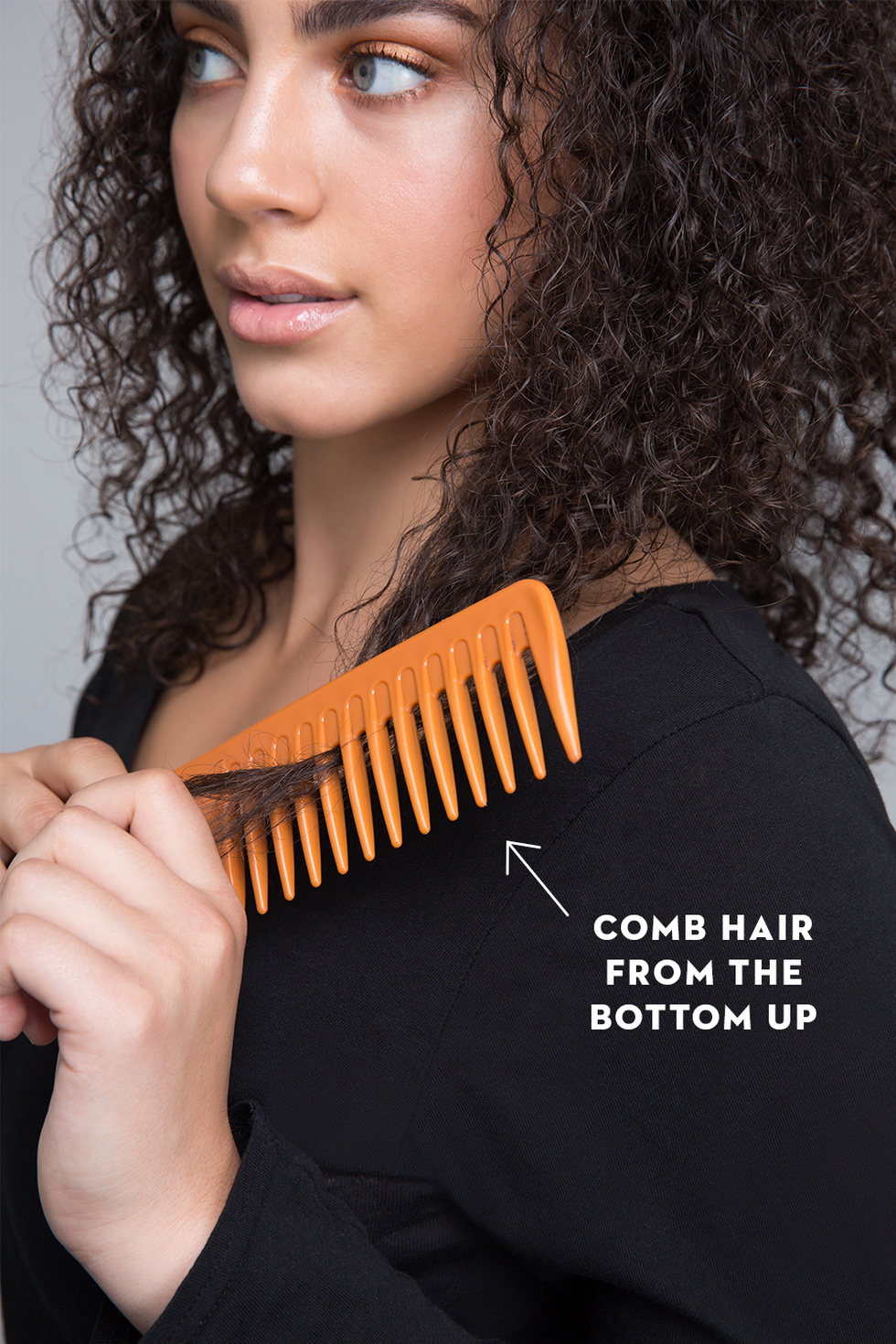
kat wirsing
TANGLE TEEZER The Original Detangling Hairbrush
TANGLE TEEZER The Original Detangling Hairbrush
Credit: TANGLE TEEZER
Detangling hair from the bottom up allows you to gently detangle each knot, rather than compounding knots toward the bottom and yanking your way through. To protect hair from damage and to detangle efficiently, our experts strongly advise that you saturate hair with a quality hair detangler and always rely on a wide-tooth comb or a specially-designed detangling brush to rake through curly hair.
“Curly hair is the most fragile type on the block, and each curl is a potential breaking point,” explains hairstylist Andrita Renee. “Using a wide-tooth comb is the gentlest way to detangle curls and it doesn’t disrupt the natural curl pattern as much as a brush would.”
2. Get regular trims to avoid split ends.
Kathryn Wirsing/Designed by Dana Tepper
Damaged hair is never a good look (not to mention split ends can make your hair frizzy!). If you want healthy curls that look bouncy and fresh, head to the hairstylist every six to eight weeks for a quick trim.
3. Use product “cocktailing” to define and hydrate curls.
“Product cocktailing is simply mixing two or more products together to meet your specific styling needs,” explains Renee. Her two favorite cocktails: smoothing serum plus mousse for curls, or coconut oil plus styling gel made for curly hair. Together, these products allow for supreme hold without leaving your hair dry or crunchy.
4. Or opt for a one-step hair hydrator.
If you don’t have the patience for cocktailing, your best bet for a one-step solution is a serum, a curl cream or a leave-in for curly hair which helps to not only smooth your curls but gives them definition and separation, helping curls to hold their form without giving any crunch. “Use three or four pumps at a time. Emulsify the product in your hands and gently take it through your curls,” advises New York City-based hairstylist and colorist Patrick Kyle.
BEST OVERALL GEL FOR CURLY HAIR
Dove Amplified Textures Shine & Moisture Finishing Gel
Credit: Dove
BEST OVERALL CURL CREAM
Moroccanoil Hydrating Styling Cream
Credit: Moroccanoil
BEST VALUE MOUSSE FOR CURLS
Herbal Essences Totally Twisted Curl-Boosting Mousse
Credit: Herbal Essences
BEST SERUM FOR CURLY HAIR
PATTERN Argan Oil Hair Serum
Credit: Pattern
5. Don’t weigh curls down with too much (or too heavy) product.

kat wirsing
When your hair goes through a dry or dull phase, what you don’t want to do is weigh it down with a ton of product. Simply use your fingertips to apply a dime-size blob of styling cream or oil to your ends (wet or dry hair is fine!), giving them extra moisture and bounce. If your hair is thinner or you’re looking for a lightweight hydration, spritz an easy-to-use conditioning spray all over the hair, focusing on the ends. For more hydration and definition, smooth a cream-based leave-in conditioner onto soaking wet hair.
BEST OVERALL LEAVE-IN
Bumble and bumble Hairdresser’s Invisible Oil Heat & UV Protective Primer
Credit: Bumble & bumble
BEST VALUE LEAVE-IN
SheaMoisture Jamaican Black Castor Oil Leave In Conditioner
Now 23% Off
Credit: SheaMoisture
NATURAL FORMULA
Davines OI All in One Milk
Credit: Davines
BEST LEAVE-IN SPRAY
It’s a 10 Haircare Miracle Leave-In
Credit: It’s a 10
6. Be careful with how you apply product.
Try applying your favorite styler to soaking wet hair with wet hands using the “praying hands” method as not to disrupt the curl pattern: The combination of the product plus full hair saturation ensures that curls stay frizz-free.
7. Try the “pineapple trick” to keep curls defined overnight.
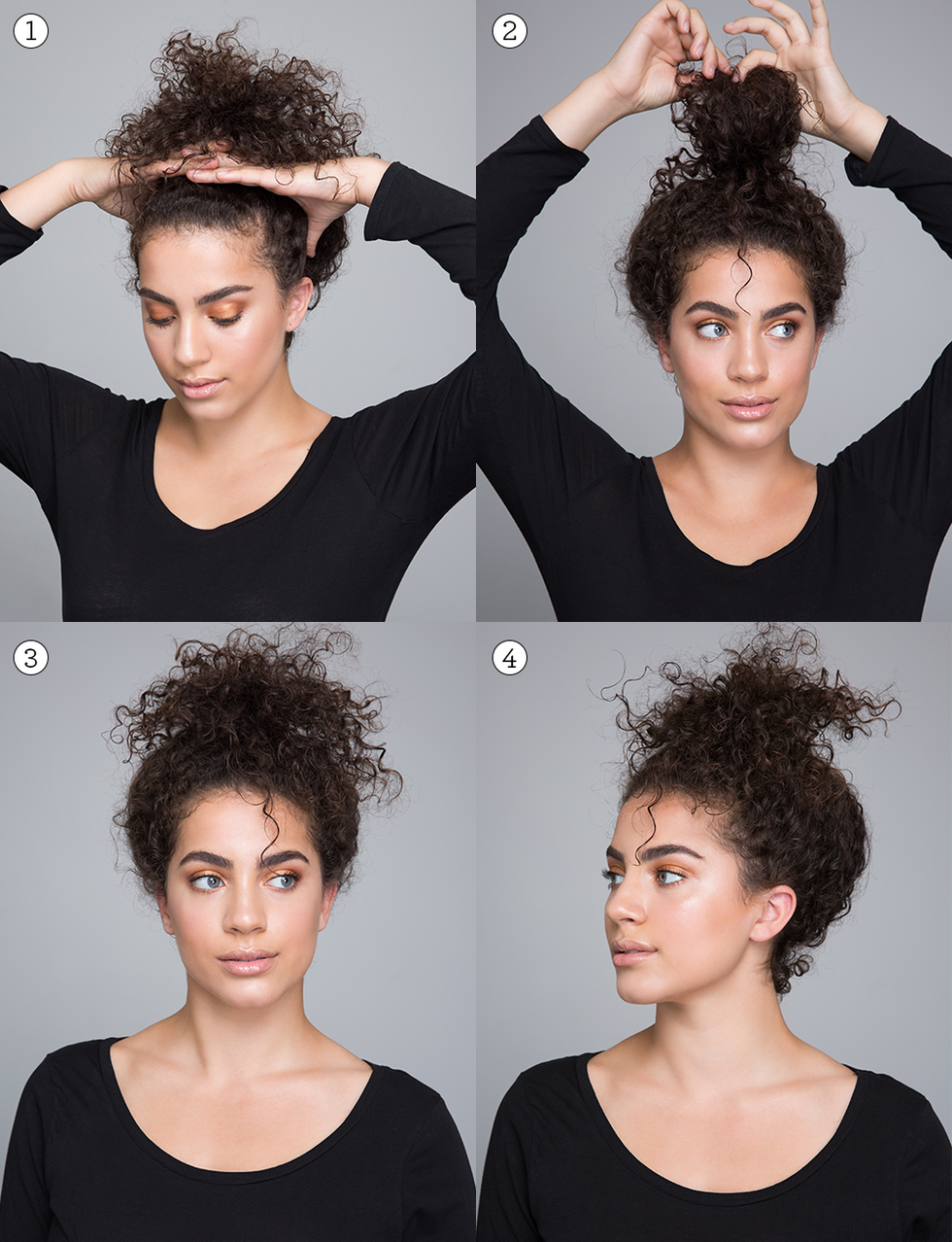
kathryn wirsing
MYK Silk Pillowcase
MYK Silk Pillowcase
Credit: Yala
“Pineappling” is a technique in which the hair is loosely gathered at the highest point of the head, usually before sleep. This protects the curl pattern while helping your hair maintain natural volume while also preventing excessive bedhead. Simply take the pony out and give hair a shake when you’re ready to wear it down.
To keep hair looking even more pristine between wash days, our experts recommend using a silk hair scrunchie for this technique to prevent hair breakage and ponytail creasing. And if you’re not sleeping on a silk pillowcase already, it’s time to make the switch: The benefits of these super-smooth pillowcases are proven to reduce bedhead by reducing friction on the hair overnight, which makes hair look sleek and hydrated day after day.
8. Use a diffuser to even out your curl pattern and add more body.

Ben Ritter
If you’re not using the attachments that come with your hair dryer, you’re missing out. By dispersing your hair dryer’s stream of hot air into a larger space, a hair diffuser can “minimize a lot of the frizz that comes when curly hair is naturally air dried,” explains stylist Britt White. Plus, it can help even out your curl pattern and boost the volume of heavy curls, giving more body to your hair. Here’s how to use your diffuser:
- First squeeze out the extra moisture in your hair after showering using a microfiber towel in scrunching motions. Don’t use a traditional towel, and don’t turban your hair: While these popular techniques may work for your straight-haired friends, it will disrupt your curl pattern and cause frizz for you.
- Apply your favorite hair products and thermal hair protectant (you should be using a heat protectant any time you use heat tools on your delicate curls to protect hair from damage).
- Plop your strands into the diffuser, cupping the tool around your hair.
- Repeat until you’ve got defined curls all over. It’s OK if your hair isn’t 100% dry: Letting curls air dry a bit can prevent frizz, too.
FAST-DRYING DIFFUSER
xtava Black Orchid Hair Diffuser
Credit: xtava
MICROFIBER HAIR TOWEL
Curly Girl Anti-Frizz Towel
Now 28% Off
Credit: Curly Girl
BEST HEAT PROTECTANT FOR CURLS
Kérastase Discipline Anti Frizz Smoothing Spray
Credit: Kerastase
INNOVATIVE DIFFUSER
DevaCurl DevaFuser
Credit: DevaCurl
9. Refresh curls with a curling iron or wand.
BEST VALUE
Conair Tourmaline Ceramic Curling Wand
BEST VALUE
Conair Tourmaline Ceramic Curling Wand
Credit: INFINITIPRO BY CONAIR
It may sound silly to curl already-curly hair, but when they’ve gotten saggy or unruly, it’s a great way to perk them up. “Pick a curling iron that’s about the same diameter as your curls,” says Sabina Yannone, a Los Angeles-based hairstylist who specializes in curly hair. “If you think your curls are too tight, go up one size to stretch.” If you want tighter curls, choose a smaller-sized barrel.
A curling wand is a great tool to fine-tune naturally curly hair: It allows you to reshape curls exactly where they need some TLC, whether it be at mid-strand, the root, or the end, without having to roll the entire strand up in the iron. The result is perfectly defined curls in just a few minutes’ time.
The cutest curly hairstyles to try ASAP
Now that you know how to treat your curls, you can style them properly, too. Whether you’re trying to keep your curls from getting unruly in the wind or preventing your strands from sticking to your face in the humid summer heat (sweat! frizz!), these styles offer great way to wear your hair down and keep it away from your eyes.
Braids are a godsend for curly girls: By braiding your hair into a different curl pattern, you lock in your moisturizing products and treatments during the night and wake up with a beautiful, low-maintenance style in the morning. Read on for easy, glam, and protective styles, perfect for day or night.
1. Everyday Topknot
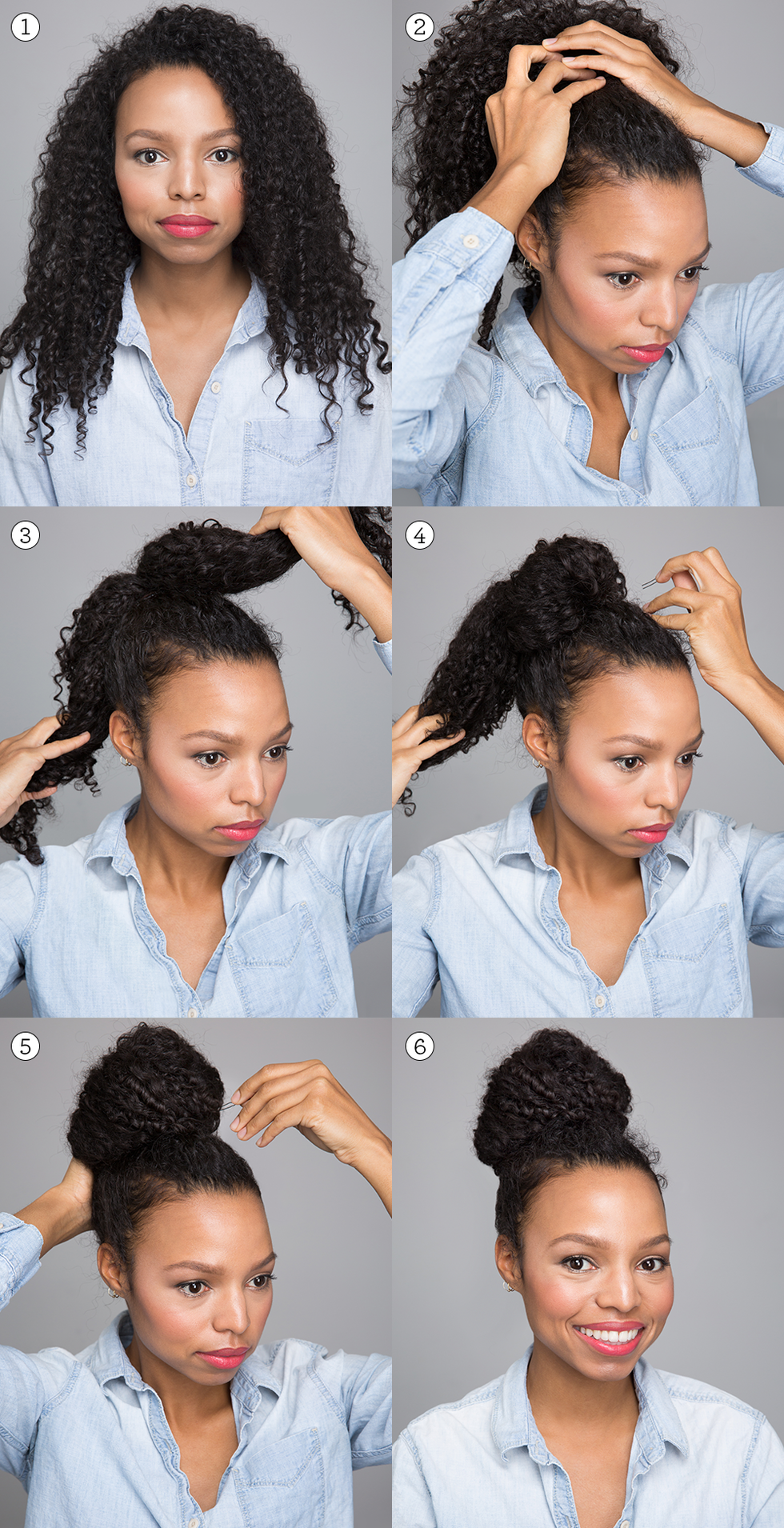
kathryn wirsing
Get the look: Gather your hair into a ponytail and secure it with an elastic. Divide your hair into two sections, wrap one around the base of the ponytail and pin it with a bobby pin. Wrap the second section around the first and secure it with a bobby pin, then gently tug the bun with your fingers if necessary to give it a full, rounded shape.
2. Braided Topknot
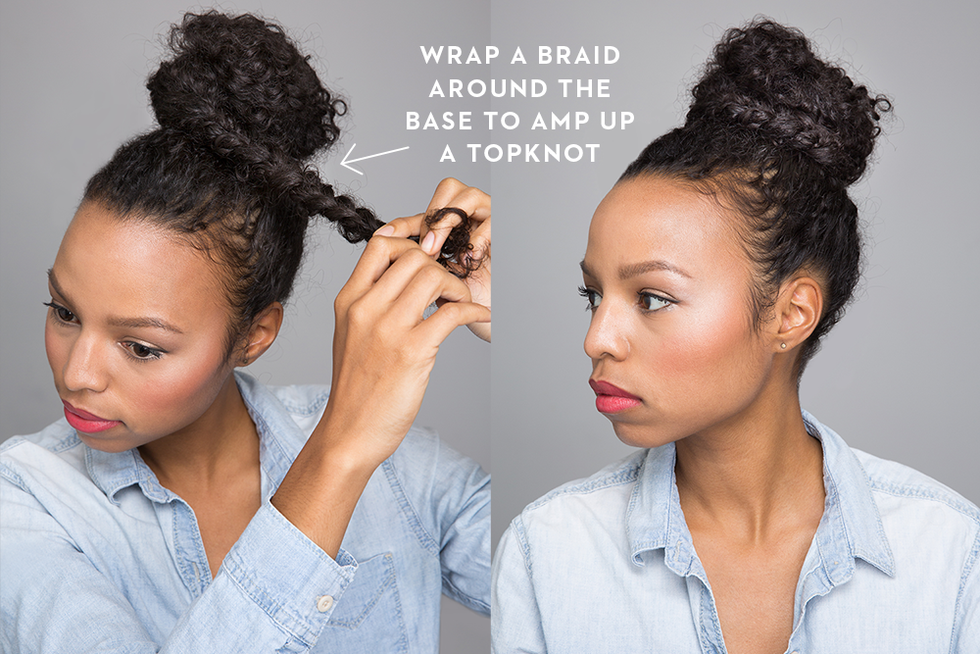
kathryn wirsing
Get the look: Leave a small section of hair out while forming your topknot. Once your initial style is complete, braid the section and wrap it around the base of your topknot, securing it with a bobby pin for an elegant overall look.
3. Braided Headband
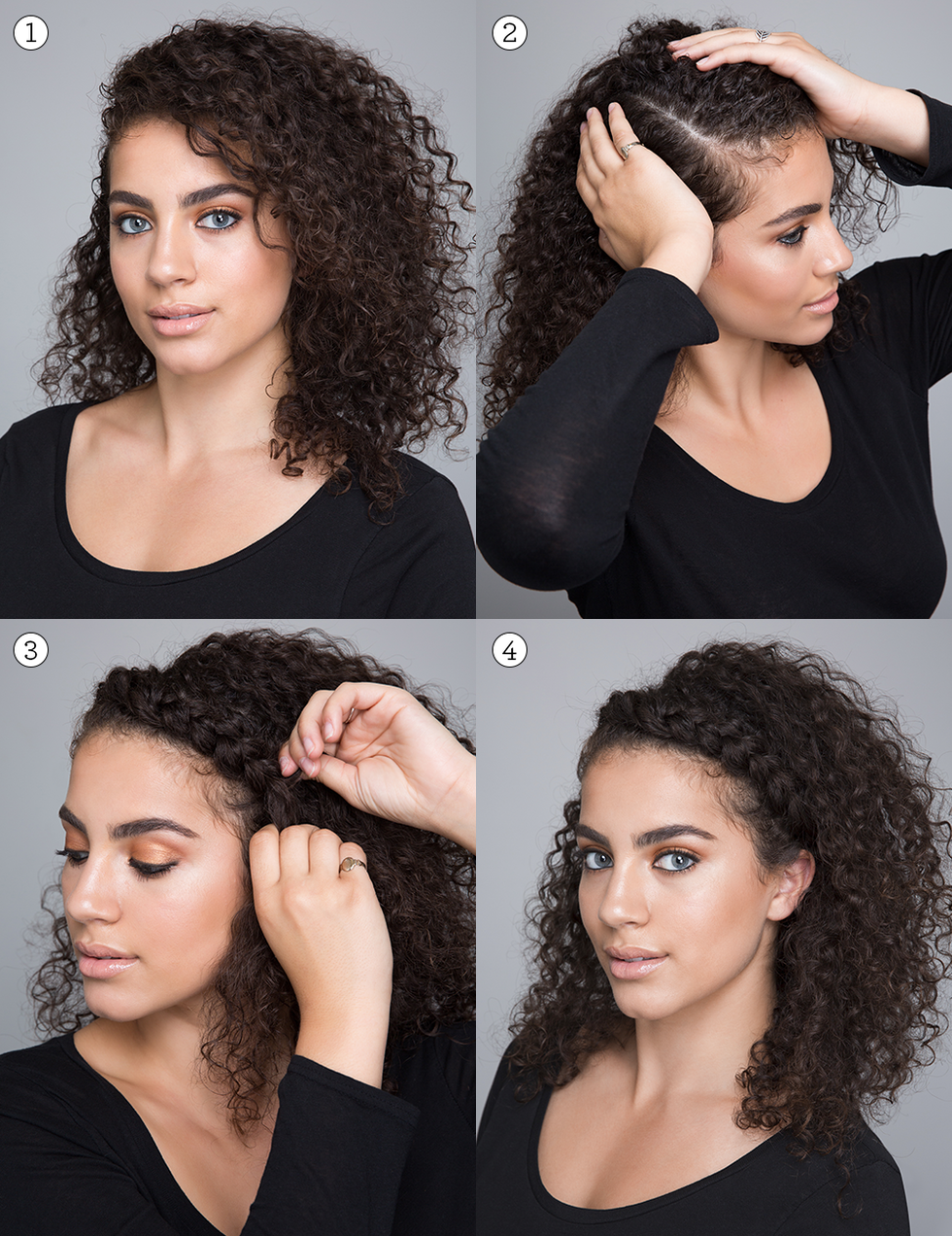
kathryn wirsing
Get the look: Create a deep side part in damp hair and braid along the hairline toward the opposite temple. When you get past your ear, pin the braid beneath the rest of your hair with bobby pins.
4. Basic Braids
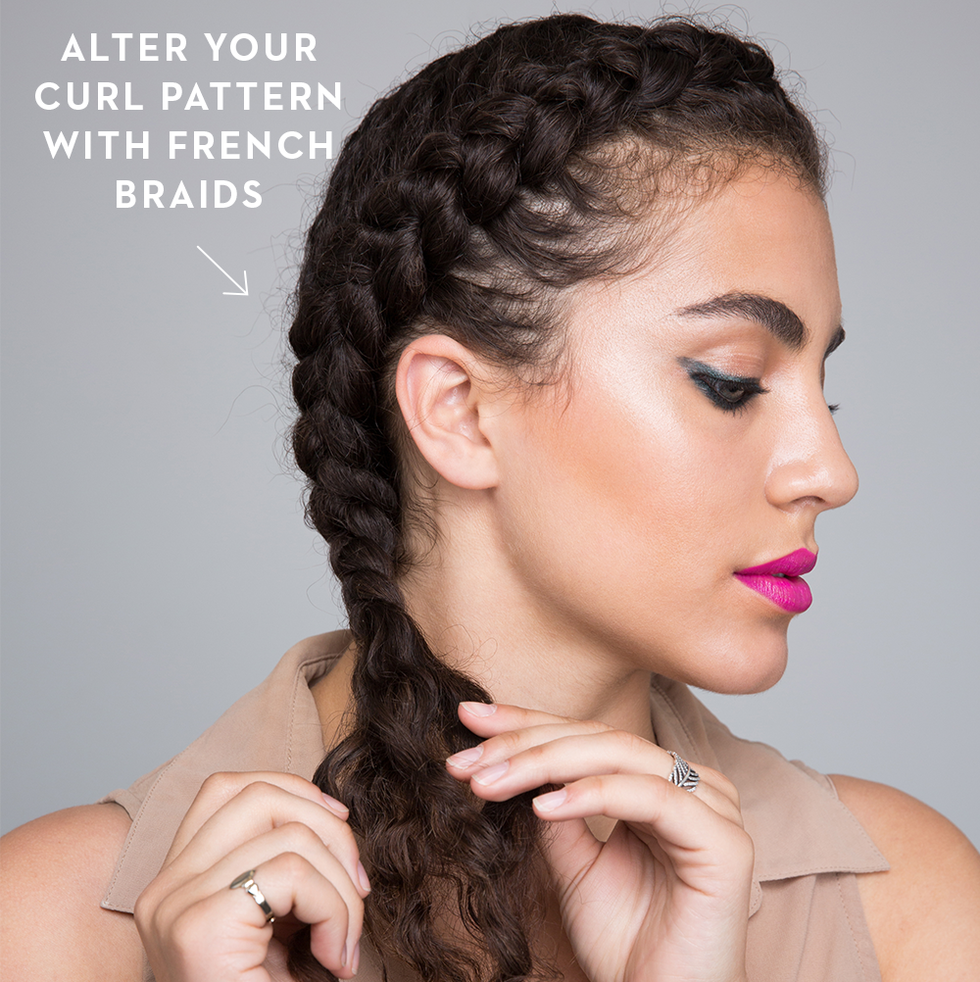
kathryn wirsing
Get the look: Try Dutch braids, French braids, or cornrows: It’s the easiest and most versatile protective style a curly-haired girl can ask for. Renee recommends using a hair priming product to moisturize beforehand, then detangle your curls completely to “significantly reduce the amount of tension that will need to be used for braiding.”
Divide your hair down the middle into two sections, then separate each section into three pieces. Starting at the front and top, create a three-strand braid. Cross the piece on the right into the middle underneath the center piece, then repeat on the left side, gradually adding more hair as you braid down to the bottom. Secure each braid with an elastic or clip.
HAIR ELASTICS
Scunci No-Damage Hair Elastics
Credit: Scunci
BOBBY PINS
Conair Bobby Pins With Case
Credit: Conair
HYDRATING PRIMER
Bumble and bumble Bb. Curl Pre-Style/Re-Style Primer
Credit: Bumble and bumble
LEAVE-IN HAIR TREATMENT
DevaCurl Heaven In Hair Deep Conditioner
Credit: Dermstore
5. Slicked-Back Ponytail
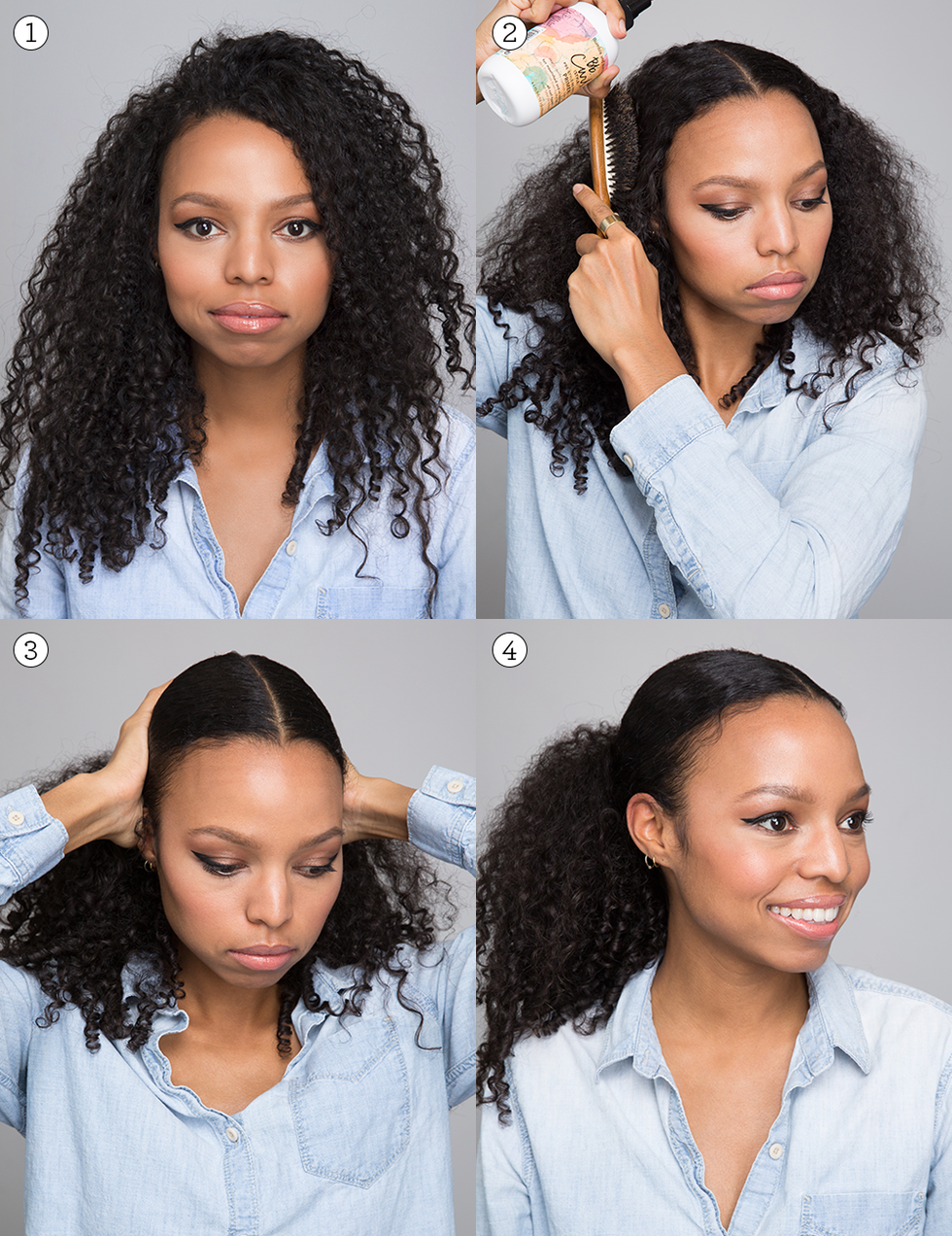
kathryn wirsing
Get the look: Apply a lightweight styling gel or pomade through your hair. Then, use a boar brush to pull the top section of your hair back into a sleek ponytail and anchor it with a hair tie. Ruffle the back a bit with your fingers for extra volume. This is another pretty option that allows you to wear your curls down while keeping them out of your face.
6. Three Braid Updo
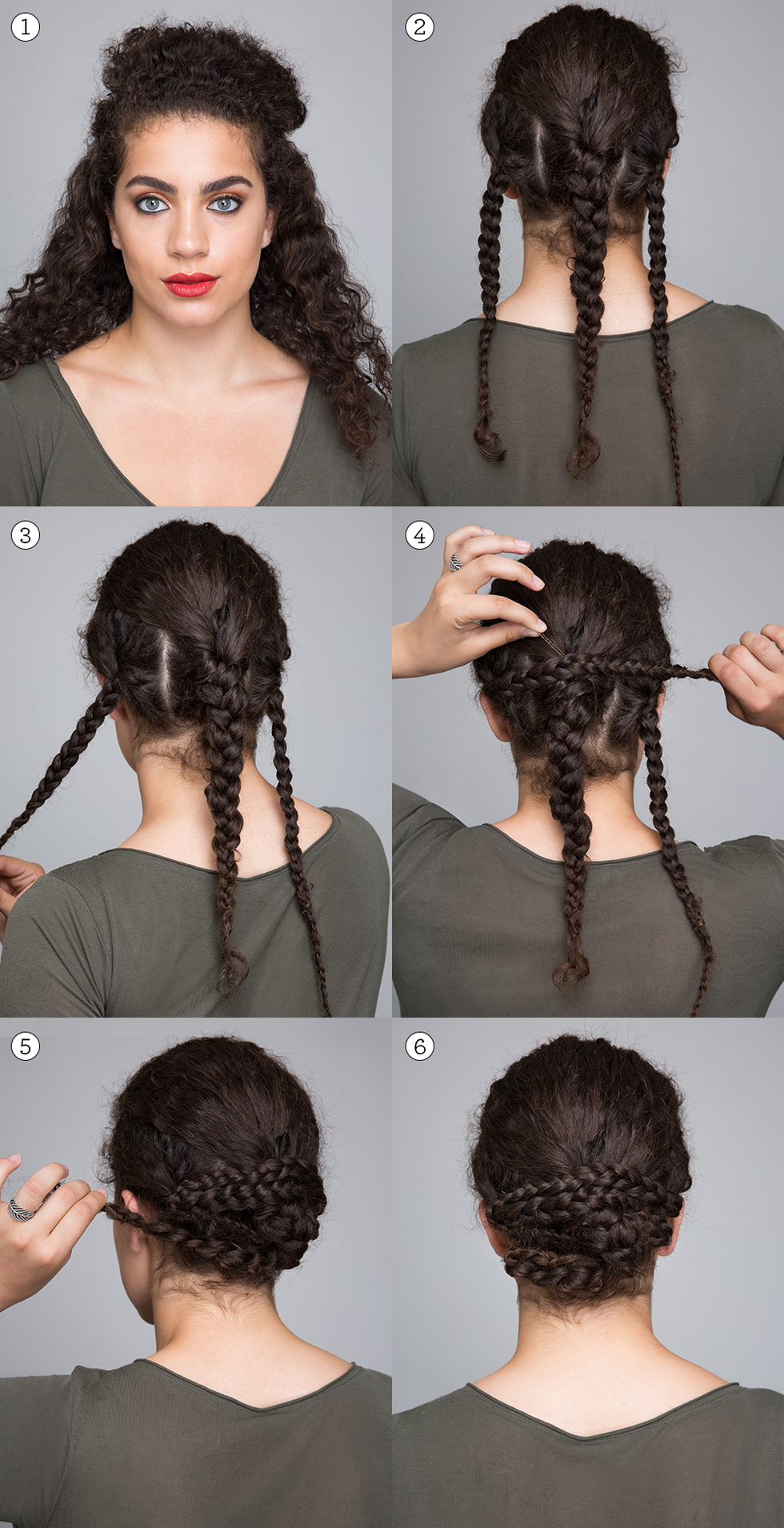
kathryn wirsing
Get the look: Separate your hair into three parts and create a three-strand braid with each section. Hold the top section, pull it across the back of your head and secure it with a bobby pin. Repeat with the second and third sections, then secure any loose pieces with bobby pins. Voila! An unbelievably easy updo.
7. Victory Curls

kathryn wirsing
Get the look: This is a curly girl spin on that post-World War II look known as “victory rolls.” Part your hair off to the side, twirl a section of hair from the front, then pin it toward the back. Repeat on the other side. Add sexy cat eyeliner to take this vintage-inspired look up a notch.

Deputy Editor
Jessica (she/her) is a deputy editor at the Good Housekeeping Institute and a longtime product tester, reviewer, writer and editor of beauty and lifestyle content. She has over a decade of industry experience, previously as beauty editor at USA Today’s Reviewed where she launched the Beauty vertical and tested hundreds of products and has covered trends for publications like The Boston Globe and The New York Times. You can usually find her sorting through piles of beauty products — and testing the best ones on camera.



